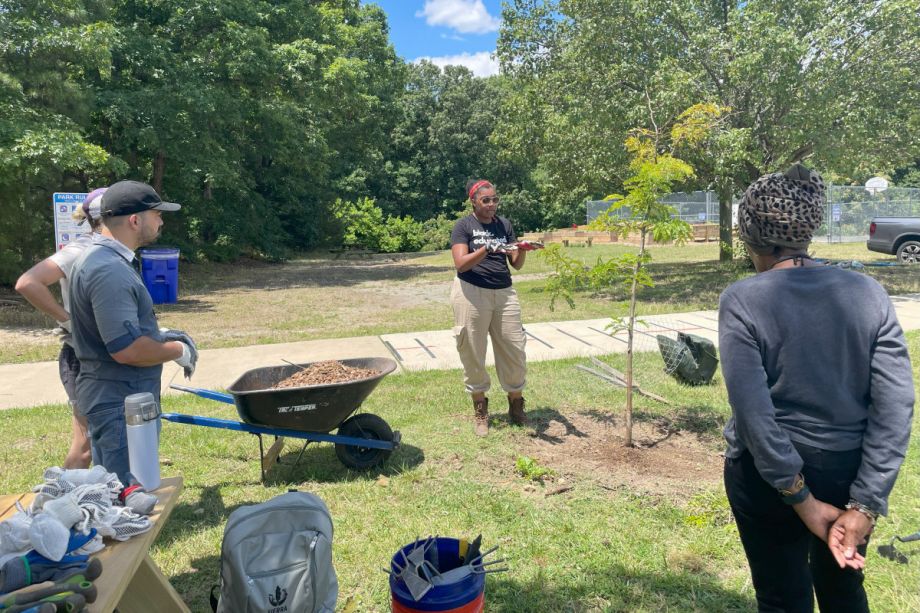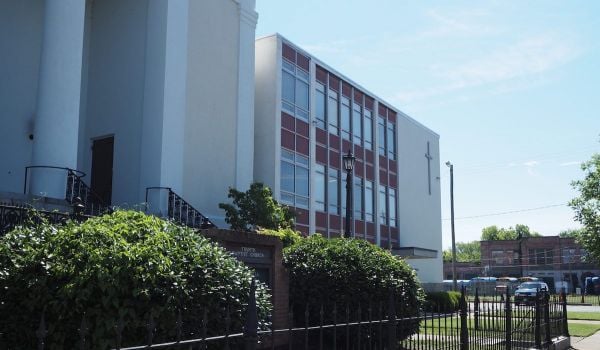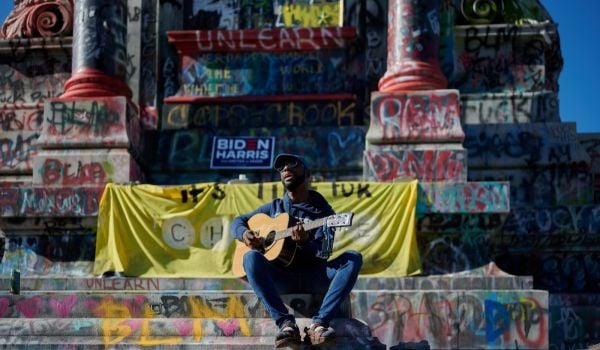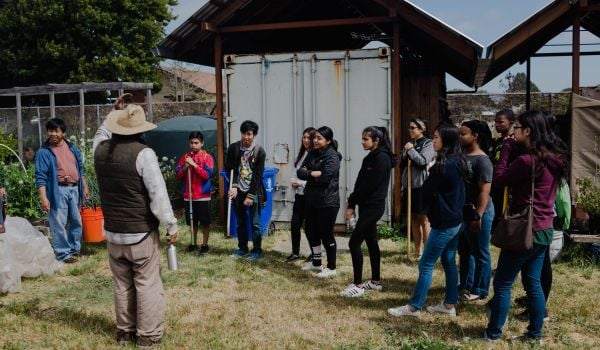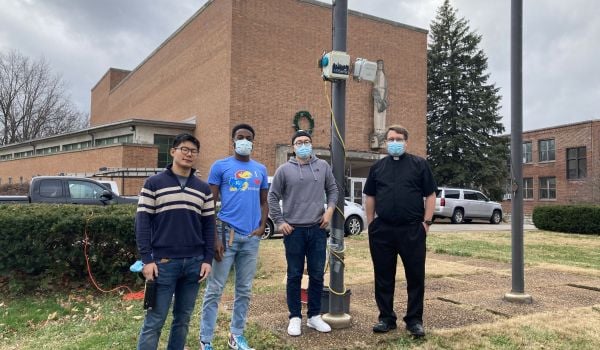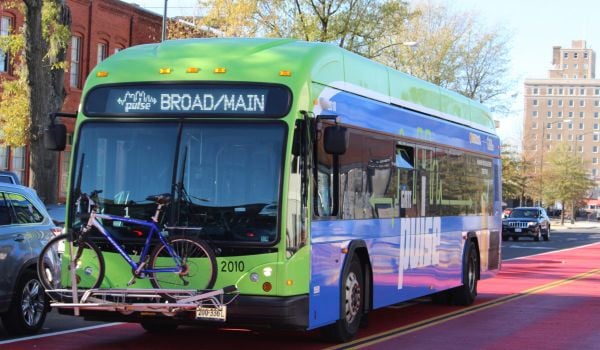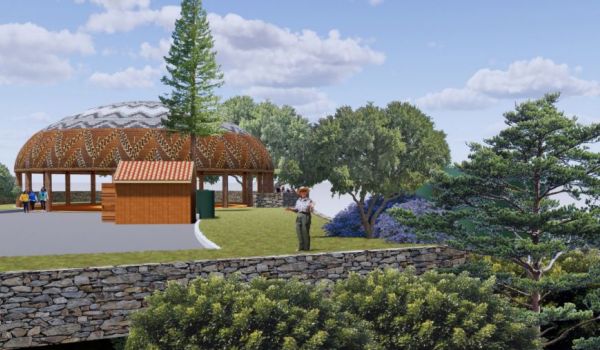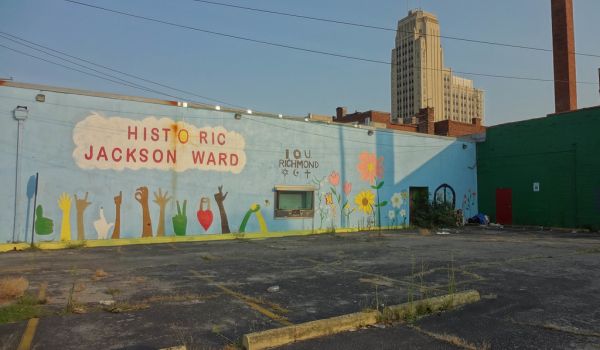This story was originally published by Greater Greater Washington.
While serving as a member of the Racial Equity & Environmental Justice Roundtable which helped craft the City of Richmond’s Climate Equity Action Plan 2030, Rev. Monica Esparza never imagined that less than a year later she would find herself fighting local officials to save green space in her own backyard from becoming a burn site.
In a departure from Mayor Levar Stoney’s policy of creating new parks on the city’s Southside, his administration is pushing through plans to add a $1 million, 21,000 square-foot fire training facility to Hickory Hill, a majority Black and Hispanic neighborhood south of the James River.
Although historic preservation is often a top NIMBY tactic to block the building of new homes and infrastructure, the process could prove Southside residents’ last hope to block the burn site planned in their backyards.
FOIA the fire department
Mayor Stoney’s proposal to transform two acres of green space, soccer fields, and a playground into a two-story stack of shipping containers to be used as a practice inferno six days a year has faced several setbacks since the plan was first announced last autumn.
In March, the Urban Design Committee rejected the fire department facility in a 7-2 vote, instructing the city to look for a new location. The following month the Planning Commission also shot down the burn site bid in a 3-2 vote with 1st District Councilmember Andreas Addison leading the opposition.
However, the votes from those two bodies no longer matter after 8th District Councilmember Reva Trammell and Mayor Stoney introduced a joint resolution in May to override all previous decisions and clear the way for the fire facility. That motion passed Richmond City Council with the full support of that body save Addison, who abstained.
Asked why the City of Richmond was so intent on Hickory Hill for the fire facility, press officer Petula Burks responded, “For decades, the [Richmond Fire Department] has traveled outside of the community to train our firefighters, which cost our taxpayers almost $1 million a year that can now be repurposed for use at Hickory Hill.”
Multiple requests for comment to confirm the $1 million in savings and whether the city has formally committed to investing that money back into the Hickory Hill community have not been answered as of the time of publication.
In her written statement Burks also downplayed residents’ concerns around losing green space, stating, “While many residents are focused on the burn tower, which will take up very little of the unused outside space, it will not be an eyesore, as many are stating. It is the intent of the Fire Department to plant additional trees and foliage to block the burn tower from the general public, which also adds to the tree canopy of the city.”
One resident of the 8th District filed a Freedom of Information Act request to obtain the list of 924 sites the city considered, 30 of which were redacted. An email obtained from assistant fire chief Travis Ford revealed that of the 11 other sites the city weighed as finalists, six were located on Richmond’s Southside, three were in the East End, two were on Northside, and none were in the city’s wealthier and whiter West End.
Environmental injustice
After complaints that unwanted facilities always end up in the city’s lower-income Black and Brown communities in Southside tanked an affordable housing project just a month prior, many pundits had expected greater opposition from Richmond’s legislative body.
“What the city council has done is very opposite of what they say they want,” stated Esparza. “There are no other park spaces within a walking radius for residents, and the fire department wants to knowingly introduce carcinogenic materials to our neighborhood where there is an active community center and park. The fire department is supposed to address environmental challenges, not create them. It would be to the city’s benefit to reverse course.”
Hickory Hill has been identified as an environmental justice community by both the Virginia Environmental Justice Collaborative as well as the Biden administration. The neighborhood ranks in the 95th percentile when it comes to the presence of people of color, poverty, and rates of diabetes and asthma (10.9% of adults in Richmond’s 8th District already suffer from the latter).
Whether it’s the demolition of Black neighborhoods to build highways and coliseums or the siting of landfills in communities of color, Virginia and its capital city have not fully abandoned the racist planning of the past.
For Esparza and the four Southside civic associations fighting the city to stop the burn site, their last hope rests with state and federal officials they believe have a legal right to intervene.
“This is a state grant that is making this live fire burn facility possible, so although this is a local issue, it is also a state and federal issue because the Virginia Environmental Justice Act makes it relevant to the state and Title VI makes it relevant to the federal level because the city receives federal funds,” said Esparza.
Hope in the history
Although historic preservation often clashes with the urbanist goal of adding more housing, even affordable housing, the bureaucratic process of protecting the past may be Hickory Hill’s best bet at avoiding becoming a burn site.
After community members reached out to state Senator Ghazala Hashmi (D-Richmond), she toured the site which will soon be part of the new Senate District 15 she represents. The free gym with Zumba and line-dancing classes, community art courses, and outside spaces for kids that include a playground, basketball courts, and soccer fields at Hickory Hill all left an impression.
“A main concern for community members is that they will lose green space because the playground will not remain,” she said. “Trees have been planted and the space has been brought back to life for families to sit out and enjoy the weather. That is a serious concern.”
To potentially prevent the fire facility, Sen. Hashmi is working with community members to determine whether Hickory Hill High School was once a Rosenwald School, a network of education institutions that at one time served over a third of all rural Black school children in America. For more than two decades all Rosenwald Schools have been on the National Trust for Historic Preservation’s most endangered historic buildings list.
Although Virginia once boasted 382 Rosenwald Schools, today few remain besides the notable Pine Grove School in Cumberland. Built in 1915, Hickory Hill was Chesterfield County’s first African-American high school until it merged with D. Webster Davis to become Carver High School. The building sat vacant through the area’s annexation into Richmond until surrounding residents petitioned the city in 1999 to convert the space into a community center.
“We need to do all that we can to preserve the space because oftentimes when we lose the physical space we lose the community history behind it as well,” said Hashmi. “I would hope that our city council would take a hard look at if this is an endangered historic site. There is great potential to offer a more robust overview of what a center like Hickory Hill has done for the community in a place where the history has been more obscured than visible.”
However, the greatest hurdle to the historic preservation of Hickory Hill is unsurprisingly the city.
“The state historic preservation process typically has the property owner make the request, but the city isn’t likely to do so, so we are exploring other avenues,” explained Esparza.
Since the commonwealth has shown increasing interest in highlighting the history of Black Virginians in recent years, Hashmi also hopes the Virginia Department of Historic Resources may get involved. With historic renovation funding and commissions focused on the contributions of Black Americans to the commonwealth, the state could play a pivotal role in further preserving the site should the city choose to designate the former Hickory Hill High School as historic.
“State and local government need to work together, and we often do, so I’m hoping we can come to a meeting of the minds and have an opportunity for city officials and the fire chief to have a more robust and engaged conversation, most especially as we are getting closer to a point of understanding the real historic significance of Hickory Hill,” Hashmi said.
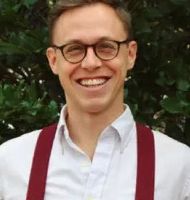
Wyatt Gordon is a born-and-raised Richmonder with a master’s in urban planning from the University of Hawai‘i at Mānoa and a bachelor’s in international political economy from the American University in Washington, D.C. He currently covers transportation, housing, and land use for the Virginia Mercury. He also works as a policy and campaigns manager for land use and transportation at the Virginia Conservation Network. Wyatt is a proud Northsider you can find walking, biking, and taking the bus all over town.

